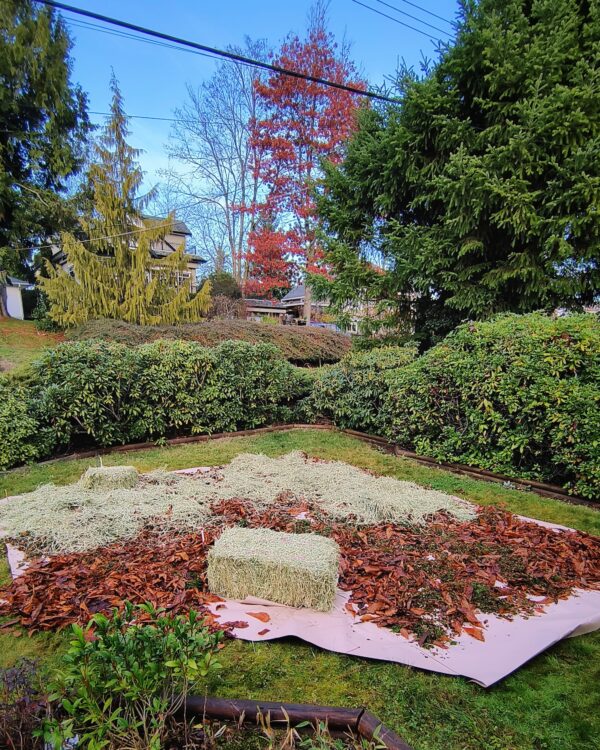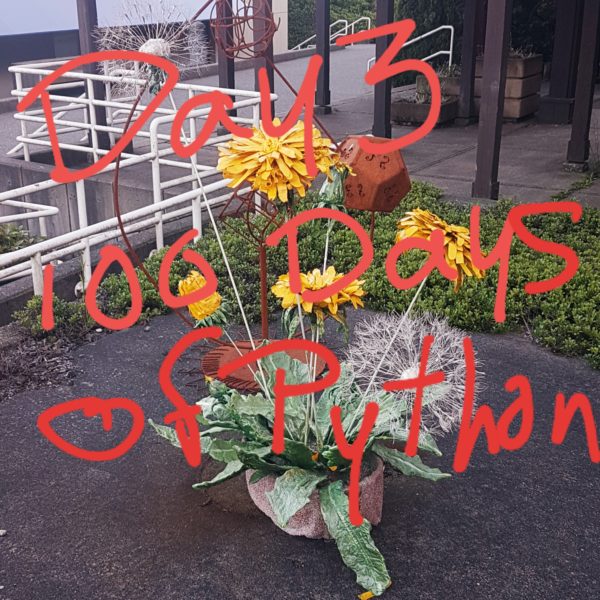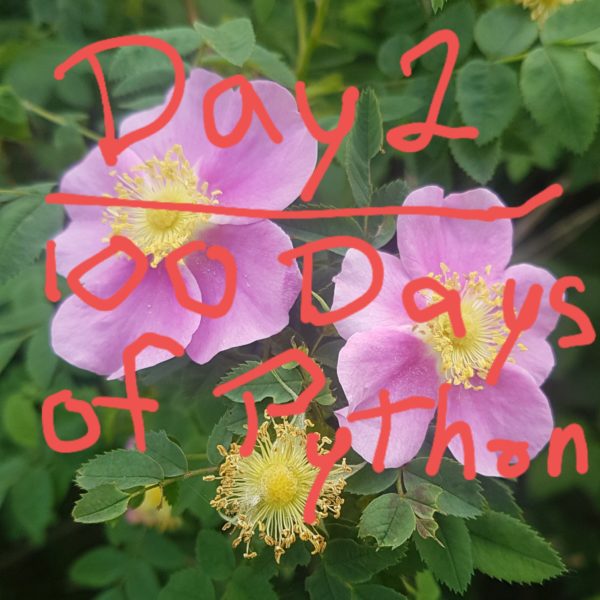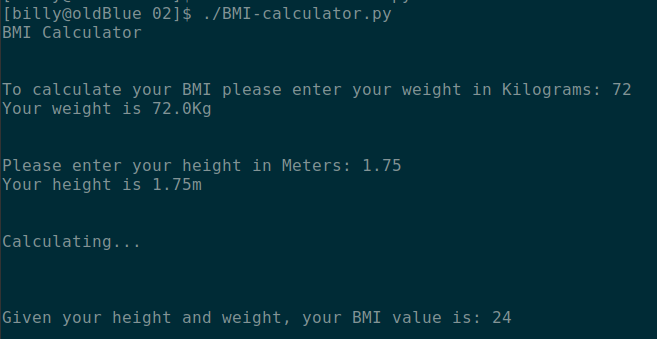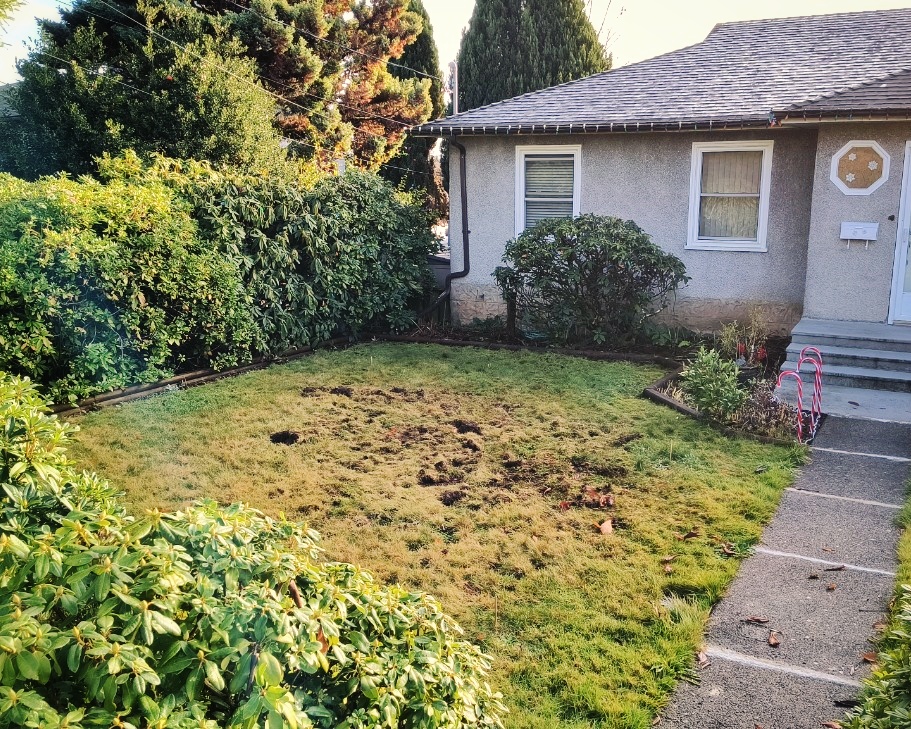
This is our front lawn on the north side of our house. The raccoons have been digging up grubs to eat for the past year or so. The whole center part has had the sod pulled up in sheets. Tanya has been turning over the lawn and puzzle-piecing it back together.
We really don’t use this beautiful part of the yard. It is surrounded by rhododendron bushes. But even in May when the blooms are in full swing, we walk by it and maybe take a few photos.
I know I must be a big disappointment to the previous generations whose lawns were a symbol of class and dignity, but that’s too square for me. I want to use this space to express my commitment to sustainability and my values. So I decided to follow Ruth Stouts guide to creating an organic no work garden.
I love this crazy old hippie. I imagine she was a square broad for much of her life, until she started gardening.
This method speaks to me because of how much sense it makes. Any garden of mine needs to be somewhat care free. With her method, the garden will stay moist under the mulch. The worms will cruise around aerating the soil, making it softer.
Plus, there is no need to dig up the sod and drive it to the tip. By leaving it in place the lawn will decompose and compost recycling the organic matter.
Preparing the lawn
To make this space into a garden I first found out where the in-ground sprinklers are. I lost them last season. I found the two I was concerned about under a blanket of sod. I marked the locations with bits of leftover water pipe.
A sprinkle of mushroom manure
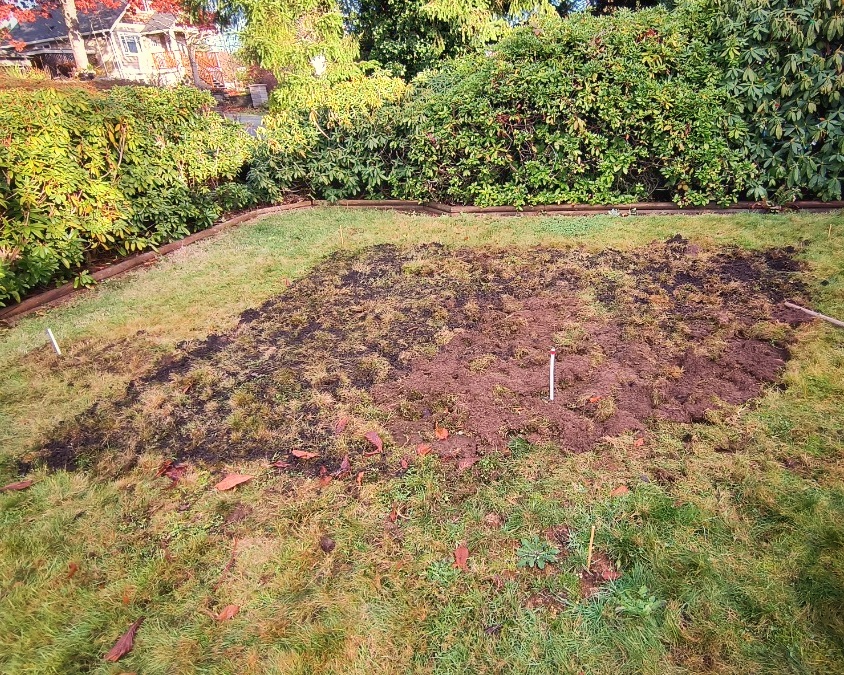
Mushroom manure was $5 a bag at Garden Works in Nanaimo, so I sprinkled three bags in the space. Not so much to add nutrients to the garden space. But to introduce composting bacteria under the paper. The idea being the lawn and grubs are going to die, the bacteria will have a good introduction to the composting process. I think, but it won’t hurt.
Putting it together
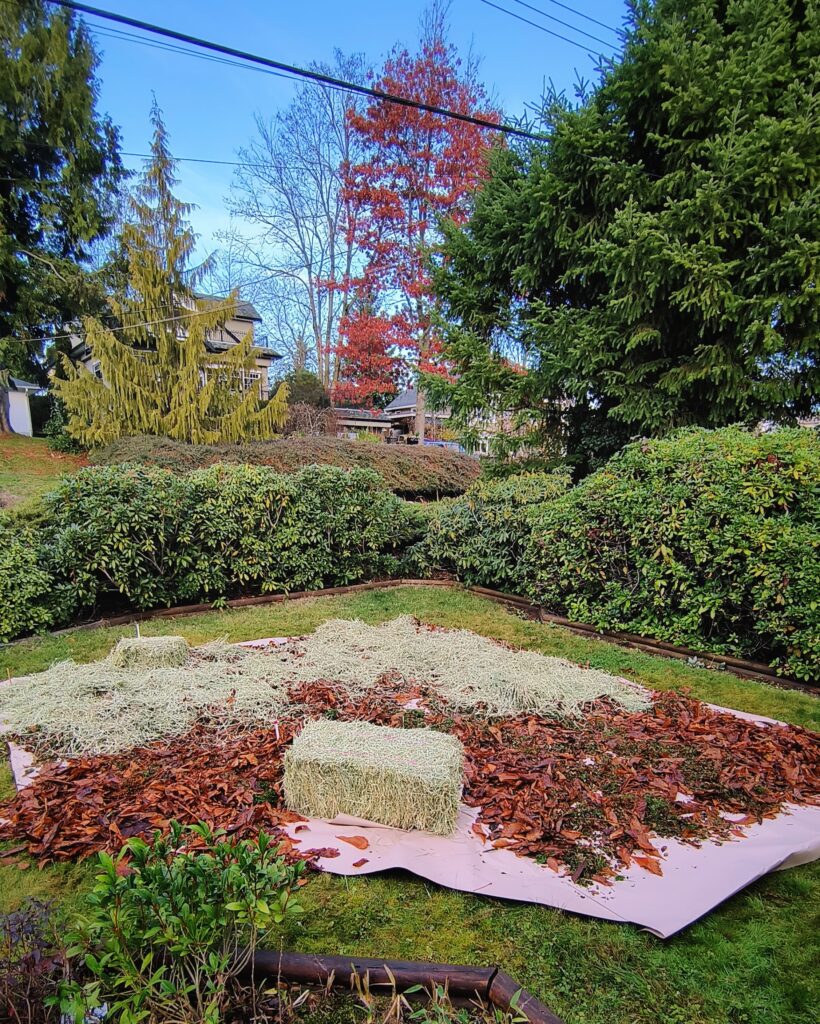
Next I took a roll of builders paper from Home Depot for $21 that covered 40M^2 and laid it out over the space, overlapping the edges. The paper acts as a light block for the next month ot two. Killing the lawn and grubs, and kick off the composting. The paper will break down too, and that is where the mulch comes in.
Adding Mulch
Mulch is any organic matter that will break down easily. This could be lawn clippings, leaves, wood chips, or bark mulch. But you need a thick layer. I had just enough material to cover the paper. Chestnut leaves from the neighbors tree, Lawn clippings, and Hay.
Hay is for horses
Hay or Straw? I used hay, people told me that the hay is fine grasses and plants with seeds and all. In the springtime, I should expect these to sprout and produce more weeds. However in this video, these unwelcome grasses and weeds can be stamped out with more mulch.
A not-yet-deep mulch composting garden
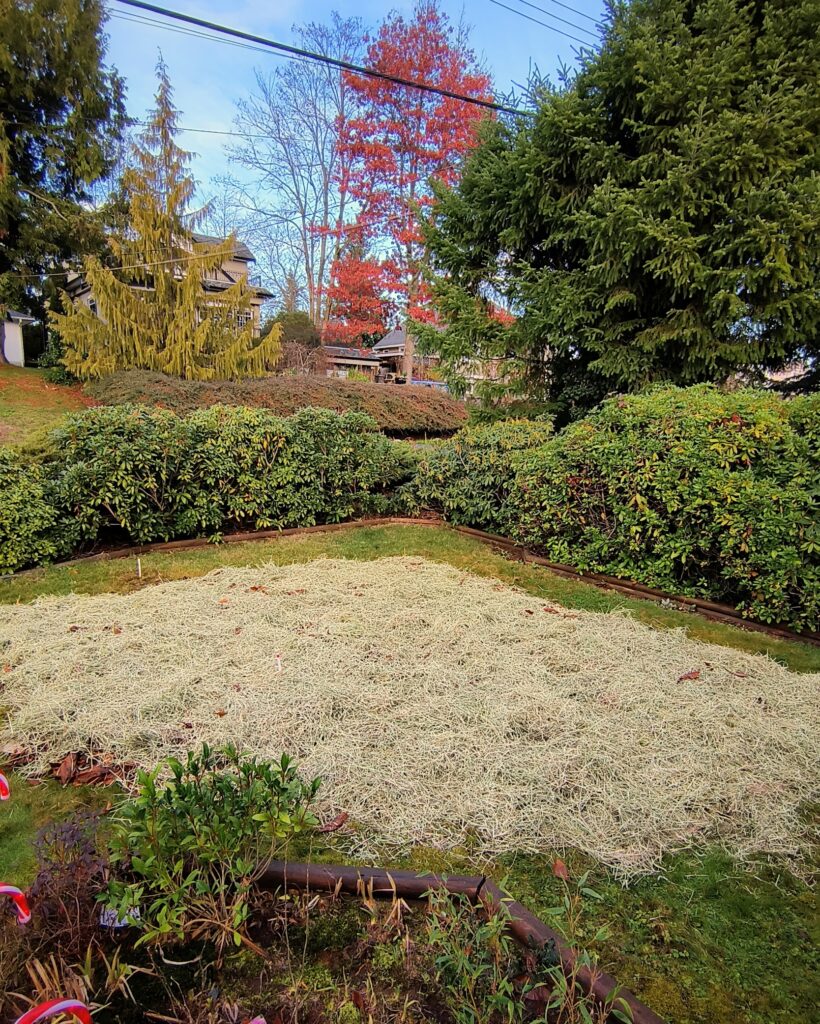
So there it is. A four layer lasagna garden bed. I expect to start planting early seeds in 4 months, early April.
In the meantime, I will build a box, and find more mulch materials. Check out my Mastodon posts for updates.
